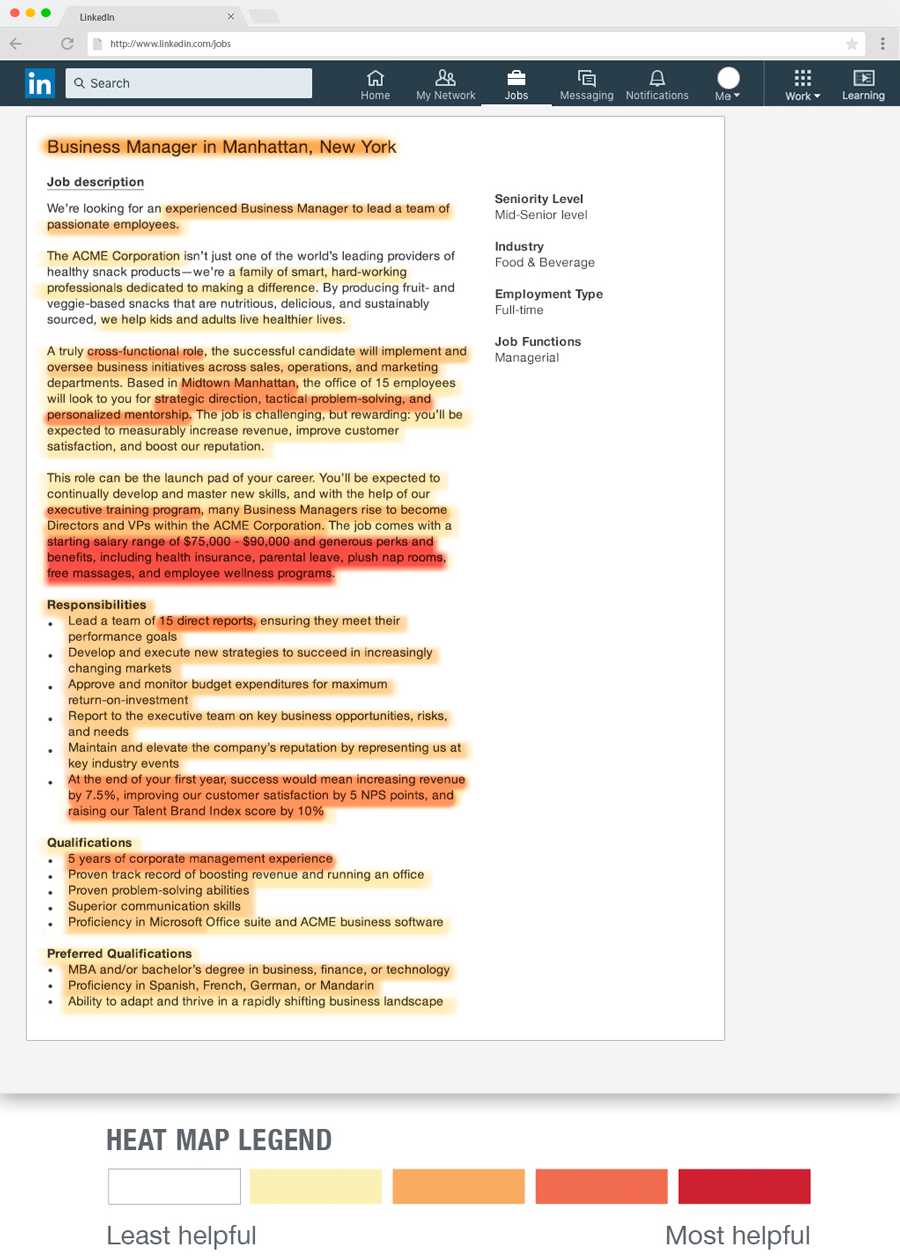The job market is extremely competitive these days. If you’re an employer recruiting new talent, missteps in the initial stages of attracting job seekers can be disastrous. That’s one reason job descriptions have taken on renewed importance. Technology is another. Between cutting through the clutter and getting to the top of search results, you’d better believe that everything in your job descriptions—from the title to the qualifications to how and where you submit them—should be strategically re-evaluated this year.
Here are some areas in which to start:
Be exciting, but don’t go overboard
Companies like Apple, Google and Amazon have brand reputations that precede them. They don’t need to worry about conveying their culture and mission in their job descriptions, but it’s likely you do.
Assume that your job listing may be the very first introduction to your company a job seeker will get. You want to be as exciting and engaging from the start, right? Yes and no. Take weird job titles, for instance. You may be tempted to use “ninja,” “rockstar,” or “guru” in your title, but you could sabotage your listing if you do.
“Weird job titles can be fun and indicative of a more laid-back culture,” states an Indeed blog post covering a study the company performed on the gimmicking titles. “However, without a cultural frame of reference, using them in your job listings can affect how well your job posting does…Most people search for roles that match their skills and experience.”
Indeed recommends keeping the job title between 5 and 80 characters, avoiding all caps, and using normal terms for titles that people are most likely to search for instead.
Personality can then be inserted into the body of the job description. The National Center for Women & Information Technology (NCWIT) recommends starting with a sentence or two that answers the question, “How does this role contribute to making people’s lives better, or solve an existing business or social problem?” Consider using inviting language surrounding your key terms, like “Come join a creative team of software developers dedicated to revolutionizing the manufacturing supply chain.”
For additional tips on crafting an exciting job description that doesn’t miss the mark, read this CIO article.
Get to Know Google for Jobs
Let’s get one thing straight: Google is important for job searches. Nearly 7 out of 10 job seekers use Google as part of their job search process. To break it down even further, more than 80 percent of millennials, nearly 70 percent of Gen-Xers, and more than half of Baby Boomers use Google to find a job.
This has been the case for years, but now there’s Google for Jobs, which makes the experience for job seekers even more intuitive and seamless. And since it’s based on organic and free (for now) search results, it’s great for employers, too. The only catch is that, like all search results on Google, it takes some time and talent to get to the top of the list.
To help you hone your skills, read these tips from recruitment marketing company VONQ, including how to structure your data and how to balance your creativity with smart search engine optimization (SEO). There are free Google tools like Google trends, Google testing, and Google’s Lighthouse that can help your test your job descriptions for optimal performance.
“Because Google has changed the digital recruiting paradigm to ‘candidate first,’ you’re going to have to put on your marketing hat if you want a piece of that job-related-search pie,” writes Max Pond, SEO manager at hiring assessment company HireView. Pond offers a guide to winning the Google for Jobs SEO game with screenshots and other very detailed advice here.
Be Realistic About Requirements
We get it. You don’t want to waste your time looking at candidates who simply can’t do the job. But it’s also time to start re-evaluating your tried-and-true list of requirements and qualifications to see if they’re turning away ideal candidates. Why?
- There are fewer candidates out there looking for jobs than in years’ past. Some of those candidates are diamonds in the rough who are filled with potential, fit your core values, and can be trained up quickly.
- You know that often-cited HP study revealing that women only apply for promotions when they meet 100% of the qualifications of the job (as opposed to men who would apply if they met a few as 60%)? Assume this is still true and that it’s true for new jobs, too. If certain qualifications are desired but not required, be sure to point that out. Don’t assume great candidates will take a chance anyway. You may be missing out on a huge section of top talent if you do.
- Education isn’t what it used to be. Many people simply can’t afford the time and money it takes to get the undergrad or MBA you think they should have. In some cases, the skills equivalent of what you’re looking for can be tested for instead. Take a lesson from those who hire software developers (70% of whom do not have a college degree) and consider whether the position you’re hiring for really needs the degree or advanced degree you once assumed it did.
- While technical skills are important, what makes-or-breaks employee retention more is a mismatching of soft skills (like communication, time management, and leadership potential) and simple core values. Now that many of these intangible attributes can be tested using sophisticated pre-employment assessments, it’s time take an honest look at whether some of the hard skills you list as requirements can instead be taught to the right people who otherwise fit your culture.
Give Candidates What They Want
LinkedIn recently completed an in-depth study on what job candidates care about when it comes to job descriptions, and the answer may not surprise you: They care about salary and benefits. The report uses a digital heat map to show that the salary range and perks were by far the most sought-after information.

Here’s how each element in a job description ranks in order of importance to the job seeker:
- Compensation: 61 percent
- Qualifications: 49 percent
- Job Details: 49 percent
- Performance Goals: 33 percent
- Company Culture: 28 percent
- Company Mission: 27 percent
- Career Growth: 25 percent
So, in addition to compensation, day-to-day details of the job are essential as are specifics on the role including tasks, location, and direct reports. Clear, specific performance goals defining what success looks like was also seen as being very important. “It gives readers more accurate insight into the role and shows you’re a serious employer,” writes the LinkedIn staff. Since success metrics are rarely included in job posts, doing so could give you a valuable leg up.
Evaluate and Try Again
While the job market is tougher than ever, there are also advantages for employers that never existed before. You have the ability now to test job posts in real-time with advanced analytics, for instance. If you work with a recruiting partner like The HT Group, the data available to you increases even more. This allows you to test, modify, and retest job descriptions so that they hit all the right points mentioned above.





